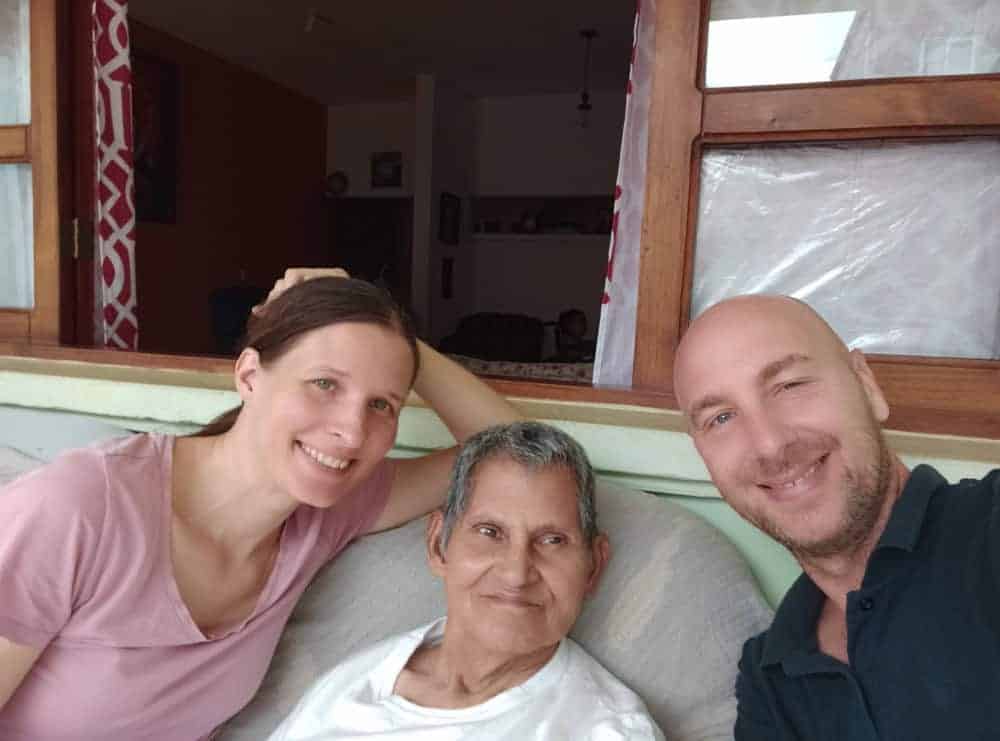What comes to your mind first when you think of Calcutta? For many, it’s Mother Teresa, of course, a saint who in some way changed the face of this city and thus also became an icon of the former capital of West Bengal (Western India).
Mother’s house
Everyone in Calcutta knows her and it is not difficult to find the main house of Mother Teresa’s sisters. You ask for ‘Mother’s house’ and everyone will be able to point in the right direction.

In that street, you can see posters and pictures of the saint at every turn – something Mother Teresa did not like during her lifetime.
Next to the main house are open shops dedicated only to the house. There you can buy souvenirs, paintings, books, pendants, mugs, T-shirts,… all on the theme of ‘Mother Teresa’.
Mandatory stop
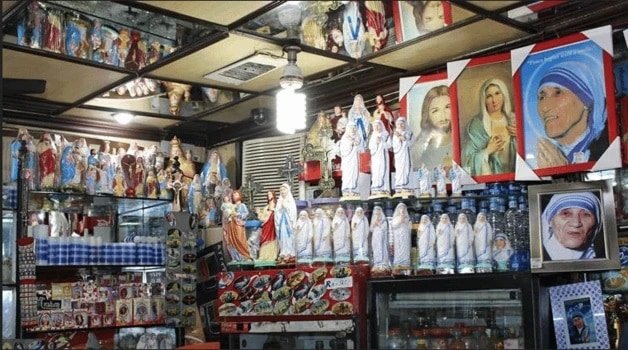
Mother’s house has become a real mecca for volunteers coming to India. Something to check out if you visit Calcutta.
And it’s that easy! You come to the house, go to the volunteer department, wait for the responsible nurse, sign up, get instructions and you can already work.
The fruit of God’s providence
We couldn’t get rid of the feeling that everything had become a kind of industry. Something familiar and routine. A tourist attraction where you can also try yourself as a volunteer.
We presented our project to the responsible sisters, but we eventually found out that our help would not be possible.
“Photography is prohibited. Money for our purpose must not be collected because it must be exclusively the fruit of God’s providence. Everyone has to find and finance their own accommodation, you only come to Mother’s House (or one of our branches) to work. These are the conditions if you want to work for us.”
“Every gift is sent from heaven!”
So one of the sisters told us very quickly and routinely. I understand when it comes to photography, but the policy regarding donations is beyond my reach.
Operando, with your help, eventually raised over $3,300US for Father Riccardo in Bangladesh. For a similar amount, the 52 abandoned children on the mission could have, say, one year of schooling.
But Father Riccardo (and so many other missionaries!) has no money, no big sponsors, no media attention, and for him every dollar is God’s Providence – whether the money comes with a dedicated donation collection or falls into the account as an unexpected gift.
Hidden Mother Teresa
Maybe God wanted us to find another ‘hidden’ Mother Teresa. Maybe he wanted us to come to the aid of someone who gives his or her life for others unnoticed, away from the eyes of the media. To one that the ‘big ones’ haven’t spotted yet and that aren’t yet enjoying the rich marketing fruits?
There are many in India!

First Love Ministries
The Lord opened the door for us in the First Love Ministries community led by Indian spouses Anil and Asha Satralkar.
You probably haven’t heard of them, like Mother Teresa and her sisters, but they are people who, in my opinion, deserve much more attention.
We are happy and honored that they accepted us and offered us the opportunity to share with you their story and a part of their upbringing.
Poor childhood
Anil was born in Bombay, into a very poor family. His father was a pastor and his mother stayed at home and cared for four children.
“Because my father was a pastor, he never had a regular income, so we always lived on the edge. We did not have regular food, let alone quality. I had only what I wore and by my fifteenth year, I was walking barefoot. I felt the pain of my father because he could not provide for us. ‘
Anil’s family didn’t have the money, but they had a strong faith in God and His power, so they never gave up.
Work for God
When he finished elementary school, he felt a desire to become a pastor, just like his father. He wanted to dedicate his life to God and work for him.

“During primary school, I lived in a boarding school because home was not enough for everyone to survive. At the end of school, God sent a lady from Norway into my life who became my sponsor.
She regularly paid for the continuation of my schooling, including accommodation and meals. So I enrolled to study the Bible and my dream began to come true.”
Anil successfully completed high school and later completed his theology studies. After graduation, he got a job as an assistant to a renowned pastor in Bombay and shortly afterwards married the pastor’s daughter, Asha. He continued his studies, successfully completing his master’s degree, and recently his doctorate.
Pastor’s daughter
Asha, too, is said to come from a pastoral family. Her father also had no regular income, but they always had enough to support their three children, Asha and her two brothers.
Asha graduated from teacher training school and initially became a teacher in Bombay, and was later invited to teach in Dimapur, Northeast India.
In Calcutta
He and Anil moved there, stayed there for a few years, and then went to Calcutta. Asha got a new job there in elementary school, which was part of the Protestant Assembly of God Church. Since then, they have stayed in Calcutta and created a new life for themselves.

Build for eternity
In Calcutta, Anil was given a professorship at Buntain Theological University, and Asha worked as a headmistress at her school in addition to being a teacher. They laid the first foundations for the mission to which God later called them.
The life motto that guided each of their further life steps is as follows:
God has given us time to build for eternity.
Ashnil and Anisha
“We always only wanted two kids,’ says Asha. ‘When our daughters Ashnil and Anisha were born, our wishes came true. We prayed to God for strength and wisdom to raise them in a good Christian and responsible home.”
However, God has not yet said the last word about children.
The founder of Ashina Elementary School was Canadian Dr. Huldah Buntain. She was particularly committed to the most disadvantaged children in the area, those from the poorest families.
Tuition at this school was intended for them, free of charge, supported by foreign sponsors and donors.
‘We adopted a child’
“Mrs. Huldah once asked me if I would like to adopt an orphaned girl, about as old as our two daughters. Anil and I quickly made a decision, accepted it, and took it as our own.”
Girl – a bad sign for the family
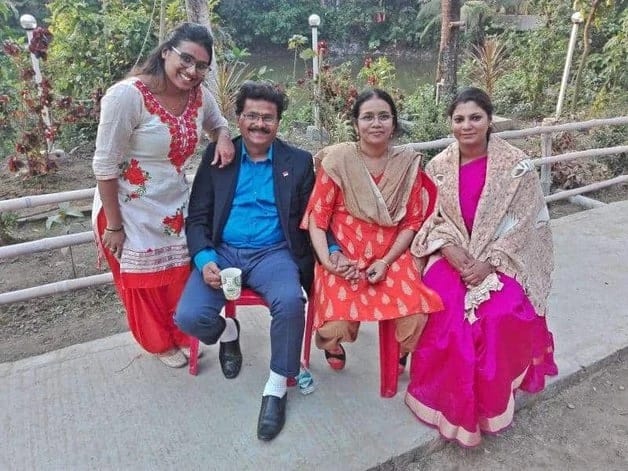
If a girl is born in India, for the average Hindu family, this is a bad sign, and they are mostly undesirable.
This is not only because women are considered weaker than men, and traditionally only men take responsibility for family property. It is also because tradition dictates that a girl’s family must pay a high dowry and cover all the wedding and wedding celebrations’ costs.
Into slavery or prostitution
For poor families (most families in India), this is such a big deal that in many places, girls are gotten rid of before they become old enough for marriage.
Thus, their parents sell them into slavery, to ‘white goods’ dealers, or they simply give them up, and the adoptive parents take the girls. If these girls are lucky, they come to good families, but they often land in even worse conditions than in their own homes.
Free lessons
“In my work, I met children who came from poor families and their parents could not afford the cost of schooling. Our school was free, but we didn’t have enough capacity to accept everyone. So I decided to teach some children, especially girls, at home. Free.”
A life decision
Thus, with the Satralkar couple, the desire to offer girls more than just schooling was slowly maturing, especially those who had been abandoned, orphaned, or victims of all kinds of abuse.
“I had a hard time with the looks on their abraded faces, the cuts on my hands, the bruises, and most of all the sadness and fear in their eyes. We decided to take a step that completely changed how we lived and fundamentally transformed our entire family.”
Salome in Sathi
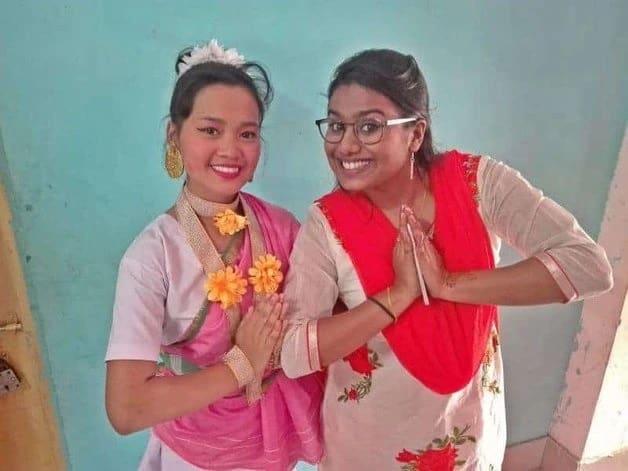
Salome was three years old when she joined their family. Just one month later, another three-year-old, Sathi, arrived.
When her father died, her mother married another man who did not want to have Sathi with her. Asha and Anil were called by a pastor who knew the circumstances and suggested that they accept her as well.
More children…
“That’s how it started,’ Anil continued. ‘We asked God to send us even more children if that was His will, but also the means to be able to support them. And God always remains faithful if you follow the plan He has for you.”
The help of an American pastor
At the time, the couple connected with American Pastor Paul, who was serving in India at the time. They found that they have a similar vision. Like Anil and Asha, Paul also wanted to help Indian girls save them from slavery, child trafficking, and prostitution.
Barkin dom and Dom upanja
They combined their visions and the First Love Ministries was formed. With the help of donors from America, Paul provided the money to buy the land and build two large houses. One was named Ark Home and the other Hope Home.
Seventeen new orphans
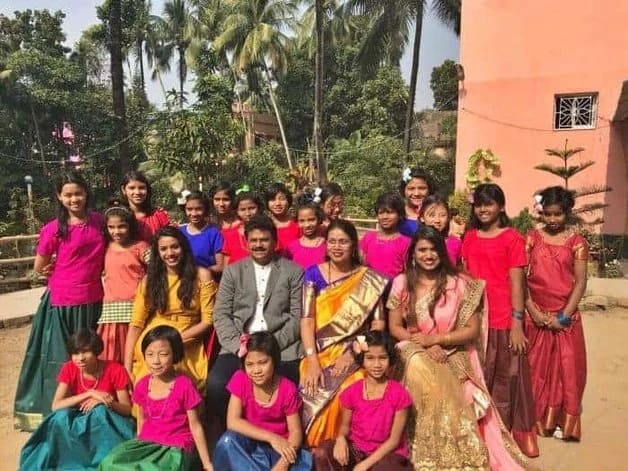
During this time, the couple adopted another seventeen girls who were gradually coming into the community. Today, after years of struggling with bureaucracy, it is also officially registered as an orphanage. Nine girls live in one house and nine in another. Their average age is ten years.
“All these girls were born to parents who were unwilling or unable to take care of them,’ Asha told us, pointing to a group of girls playing in the house’s backyard. ‘Many of them have been victims of sexual or physical violence and have come to us wounded, confused, malnourished, and shaken.”
A better future
Their eldest daughter, Ashnil, is 22 years old today and is already taking responsibility for the girls, the other daughter has a job in Bombay. Even their first adopted child is already an adult, responsible and independent.
With Asha and Anil’s help, all these girls today have a good chance to grow into self-confident, happy women and create healthy and orderly families.
The family needs help
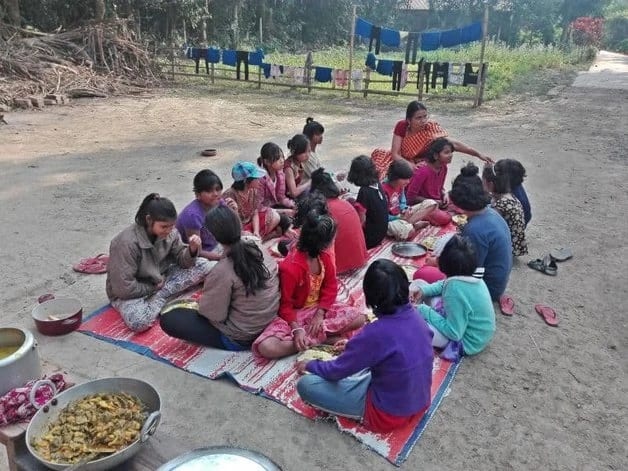
In the following articles, we will write even more about how life in the community works and how we became involved in it.
Funds for schooling
Asha and Anil told us that currently, their biggest challenge is to provide their children with a school outside the community.
“Due to the high costs of tuition and school supplies, we decided at the outset to educate our children at home. We hired teachers who come to the community regularly and teach the children what they would otherwise learn in school. But the laws in India do not allow it anymore, so we have to send them to an external school, which is very expensive for us.”
